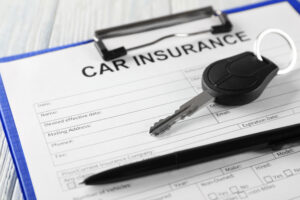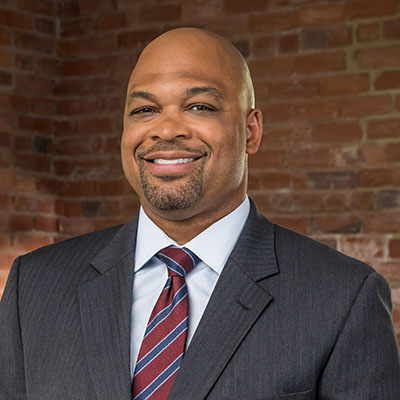Oftentimes, it pays to be a loyal customer. You can receive discounts on purchases, points, upgrades, birthday gifts, and travel rewards. But when it comes to auto insurance, many customers are overpaying for their premiums simply because they haven’t shopped around or compared prices in years.
In fact, insurers are relying on your loyalty and charging you more because of it. Some insurance companies even use a controversial practice called “price optimization” to charge higher rates to customers they believe are less likely to shop for lower rates.

What is price optimization?
Generally speaking, price optimization determines the “optimal price point for a product or service” and aims to maximize profits. But for insurance companies, price optimization is the practice of charging higher premiums based on the likelihood that a person will not shop around for a lower price point.
In some states, insurers are setting prices using “algorithms based on all kinds of personal data, including loyalty to other service providers” and “shopping behavior,” data that is “separate . . . from other common auto insurance rate factors like age, neighborhood, gender, and type of car you drive.” Based on this data, insurance companies charge dynamic prices for their insurance policies. While price optimization leads to increased profits for insurance companies, it also means that many consumers are paying markedly higher premiums than others for the same policy.
How does price optimization work?
Price optimization aims to charge customers the highest premium price they will pay without causing them to switch insurance companies.
To do this, insurers use a variety of data sources, including:
- Customer risk profiles: This includes information such as age, driving history, and vehicle type.
- Loyalty data: This includes data on customers’ loyalty to other brands and service providers.
- Customer preferences: This includes information on customers’ buying and spending habits.
Insurers use these data to create a pricing model. The pricing model is a mathematical equation that predicts the optimal price to charge each customer, meaning the prices charged for the same exact insurance policies are dynamic.
Auto insurance is a commodity
The fact that insurance companies charge customers different prices for identical auto insurance coverage is especially concerning, considering that auto insurance is a commodity product. A product is a commodity “when all units of production are identical, regardless of who produced them.” On the other hand, a “differentiated product” is “uniquely different” from those produced by its competitors. In the context of auto insurance, insurers should be hard-pressed to make the case that their product is better than the competition.

For instance, two auto insurance policies with identical coverage – the same liability limits, underinsured and uninsured motorist coverage limits, and the same amount of available medical payments coverage and collision coverage – afford the consumer the same level of protection, no matter what the insurance company that has written the policy. Indeed, to be considered “identical,” the policies must have the same coverages outlined in the declarations page. However, once that has been established, the issuer is contractually obligated to provide you with the coverage outlined in your policy.
In Virginia, the delivery of motor vehicle insurance contracts is highly regulated. As a general rule, “the controlling instrument is the statute . . . and provisions in the insurance policy that conflict with the requirements of the statute, either by adding to or taking from its requirements, are void and ineffective.” Thus, a policy that provides less coverage than what is mandated by statute is automatically reformed to comply with the appropriate sections of the Virginia Code. So in essence, insurance companies are offering the same product.
Other examples of commodities include sugar, metals, and natural gas. In the case of sugar, for instance, it is extremely challenging for manufacturers and producers to differentiate themselves and charge varying prices. Personal auto insurance should be no different. Yet, insurance companies spend billions of dollars a year on advertisements and marketing to sell a commodity product and attract loyal customers. My advice: Do not be distracted – purchase the highest coverage limits you can afford for the most competitive rate you can find.
Regulation: Is price optimization fair?
Price optimization is very controversial. While most argue that it is discriminatory and unfair to charge customers different prices for the same product, others argue that insurance companies are only trying to maximize profits in a competitive marketplace.
The reality is that profit maximization is outlawed in a number of states, including Virginia. To be clear, Virginians continue to be charged different prices for the same levels of insurance coverage. However, Virginia law requires that differentials for the same coverage be based on “loss experience” and data that are “actuarially sound.” That said, this is an area that is extremely difficult to regulate and whether insurance companies are relying on “price optimization” data is difficult to discern. In most cases, shopping for a competitive rate can significantly reduce your current car insurance premium.
How can I avoid overpaying for insurance?
Ryan Brady, author of “3 Signs It’s Time to Break Up With Your Car Insurance Company,” said it best: “Loyalty is typically a one-way street when it comes to car insurance.” However, many consumers are overpaying for their car insurance, and many more don’t even know it.

Here are a few things you can do to avoid overpaying for auto insurance:
- Shop around for car insurance quotes regularly. This will help to ensure that you are getting the best possible price.
- Refrain from blind loyalty to your insurance company. If you find a better deal elsewhere, don’t hesitate to switch.
- Be aware of the factors that insurers use to set prices. This will help you understand why you are being charged the price you are.
Conclusion
Unfortunately, in the context of auto insurance, price optimization results in loyal customers paying the most for their insurance policies. To avoid overpaying for your auto insurance, the best thing you can do is to shop around for car insurance quotes regularly and be aware of the factors that insurers use to set prices. By doing this, you can ensure that you are getting the best possible price.
Allen & Allen understands many of the nuances of auto insurance and knows how to maximize benefits for people who have been injured through no fault of their own. If this has happened to you or a loved one, call Allen & Allen for a free case evaluation today at 866-388-1307.



